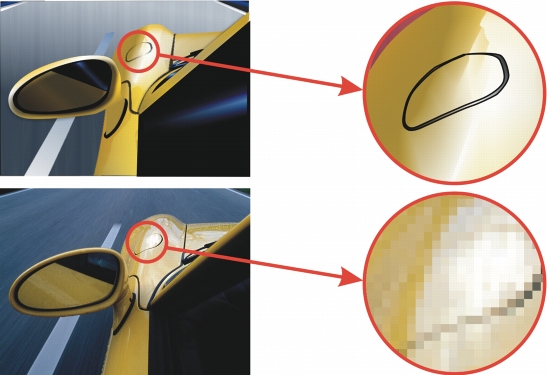
The two main types of computer graphics are vector graphics and bitmaps. Vector graphics are made of lines and curves, and they are generated from mathematical descriptions that determine the position, length, and direction in which lines are drawn. Bitmaps, also known as raster images, are composed of small squares called pixels; each pixel is mapped to a location in an image and has numerical color values.
Vector graphics are ideal for logos and illustrations because they are resolution-independent and can be scaled to any size, or printed and displayed at any resolution, without losing detail and quality. In addition, you can produce sharp and crisp outlines with vector graphics.
Bitmaps are excellent for photographs and digital paintings because they reproduce color gradations well. Bitmaps are resolution-dependent — that is, they represent a fixed number of pixels. They look good at their actual size, but they can appear jagged or lose image quality when scaled, or when displayed or printed at a resolution higher than their original resolution.
You can create vector graphics in Corel DESIGNER. You can also import bitmaps (such as JPEG and TIFF files) into Corel DESIGNER and add them to your drawings. For information about working with bitmaps, see Working with bitmaps.

Top: A vector graphic consists of lines and fills. Bottom: A bitmap is made up of pixels.
|
|
Copyright 2013 Corel Corporation. All rights reserved.